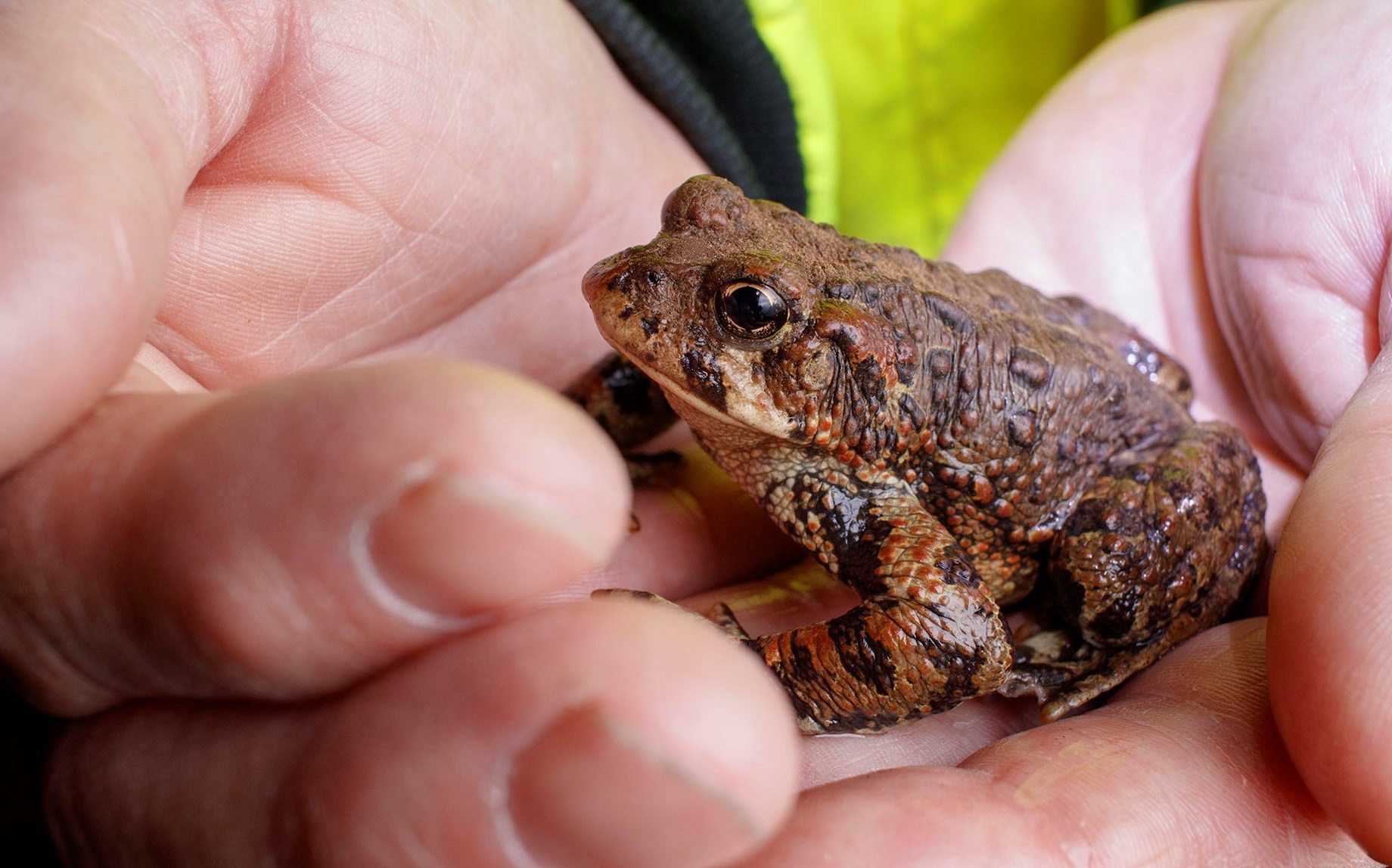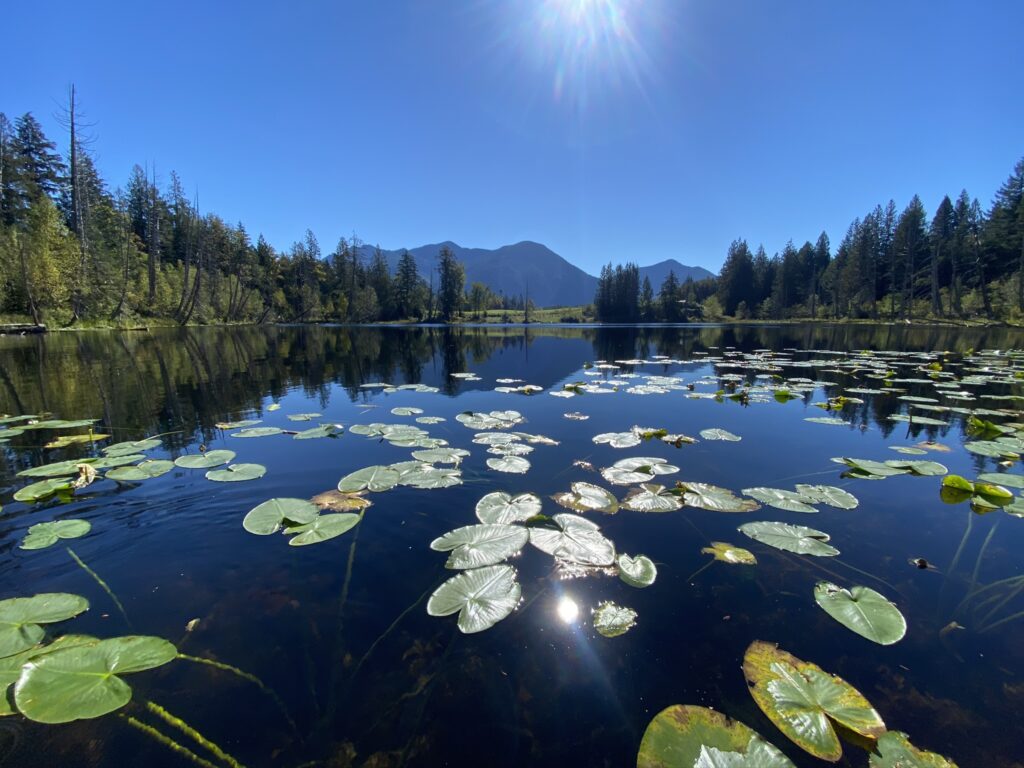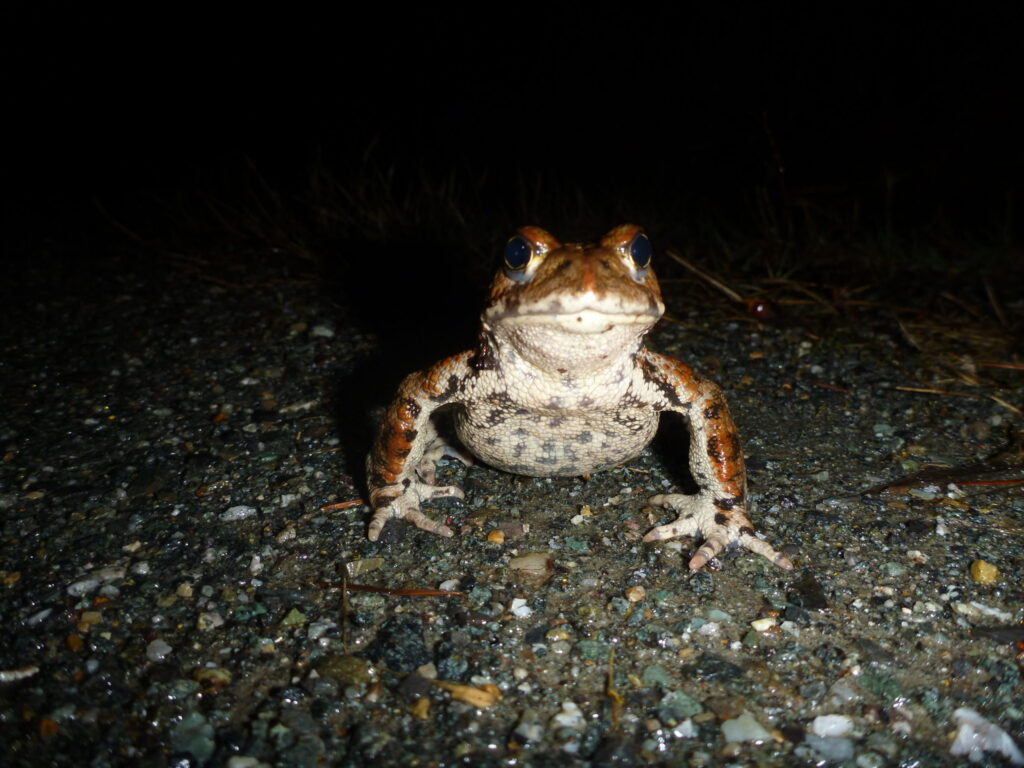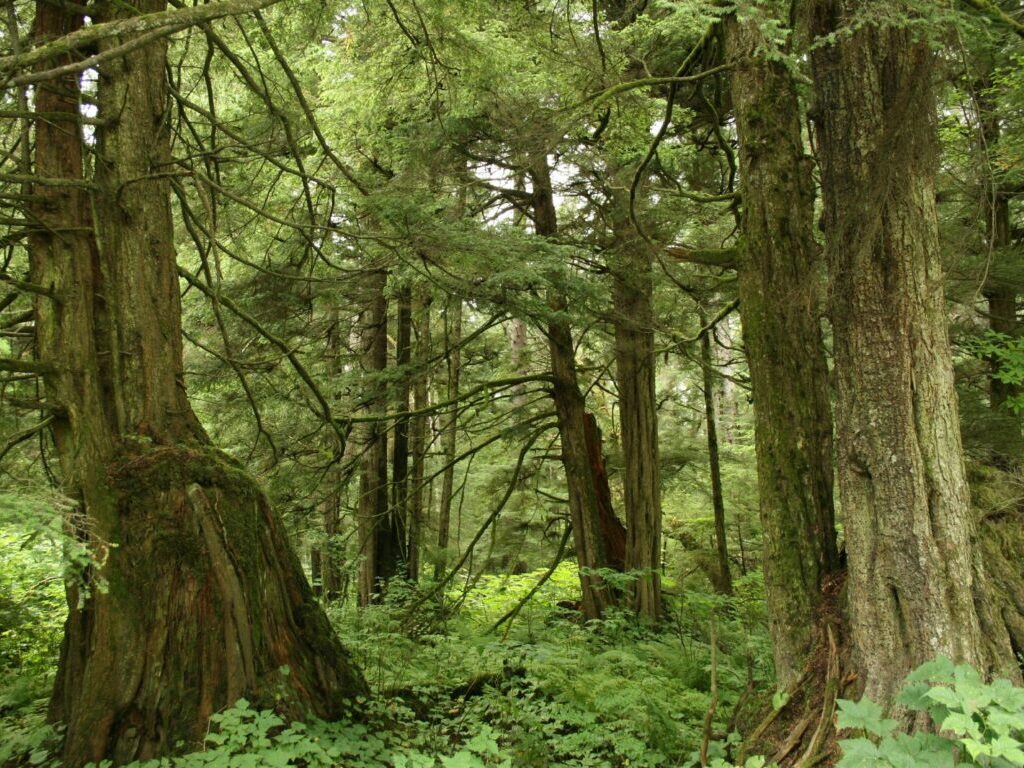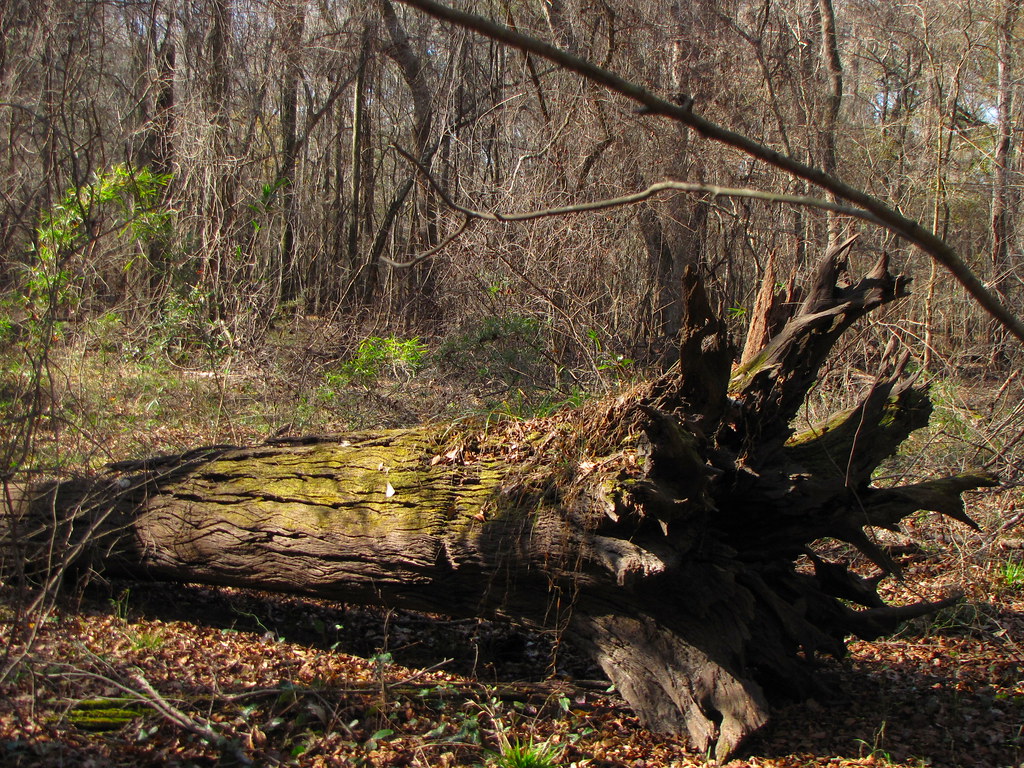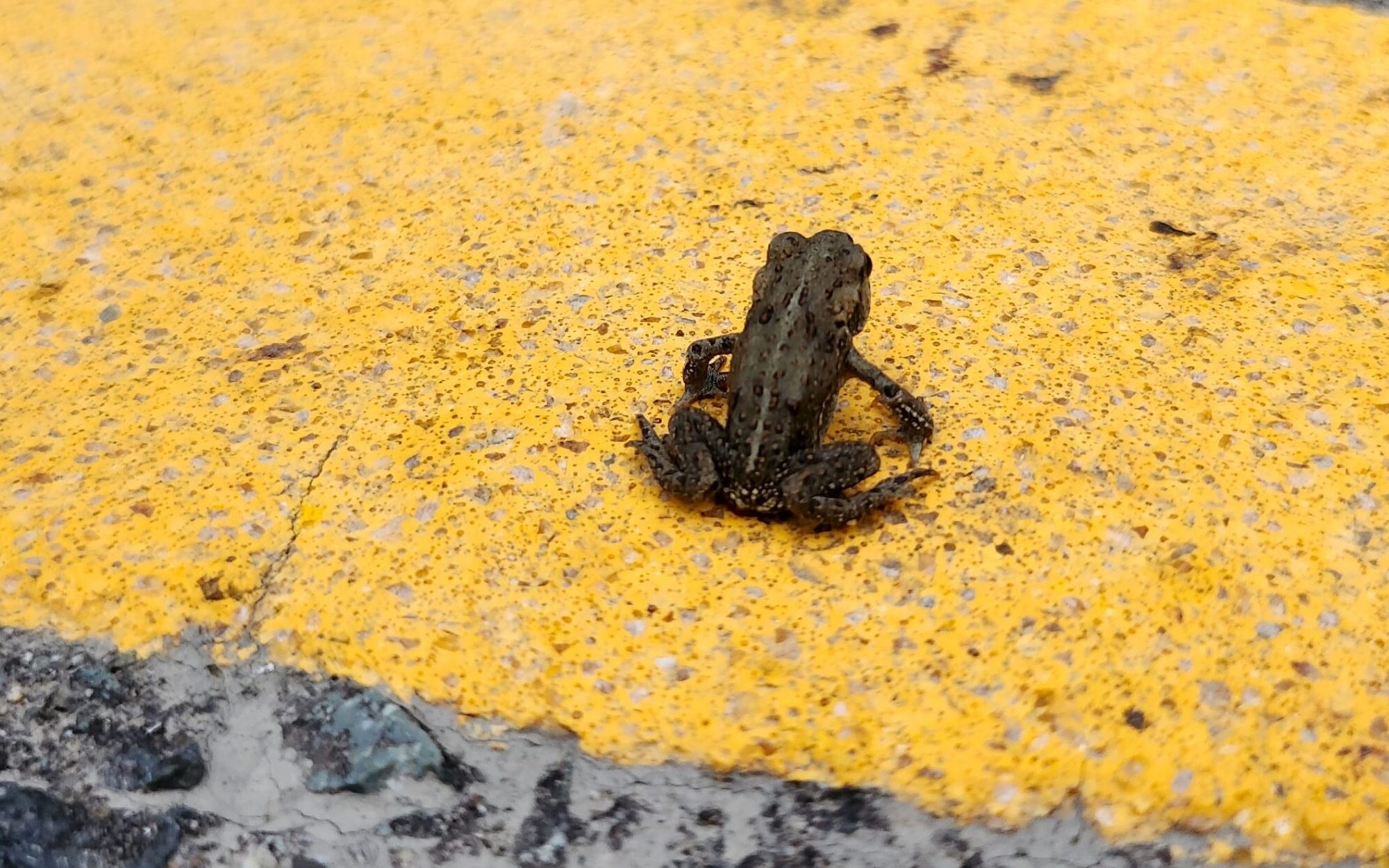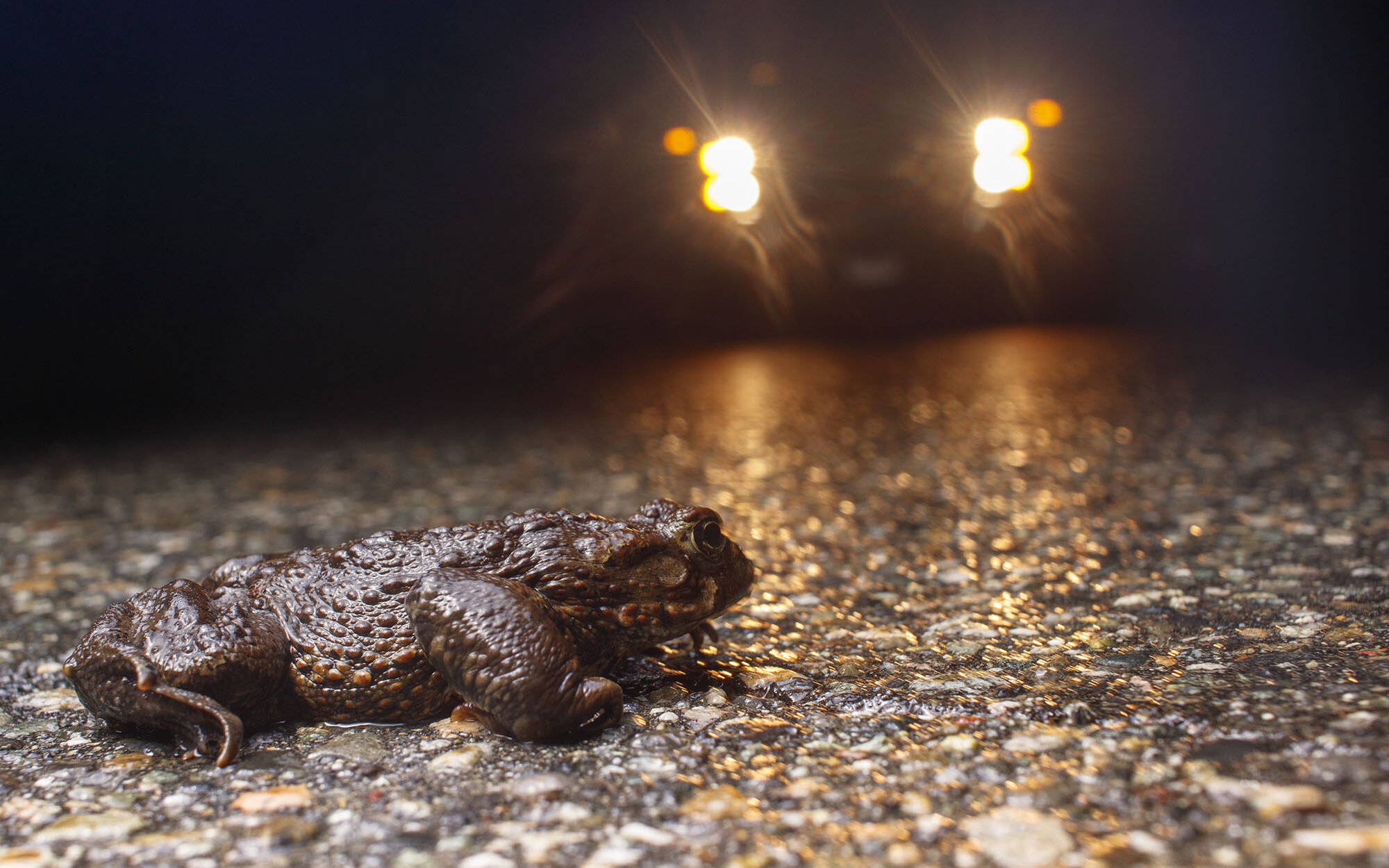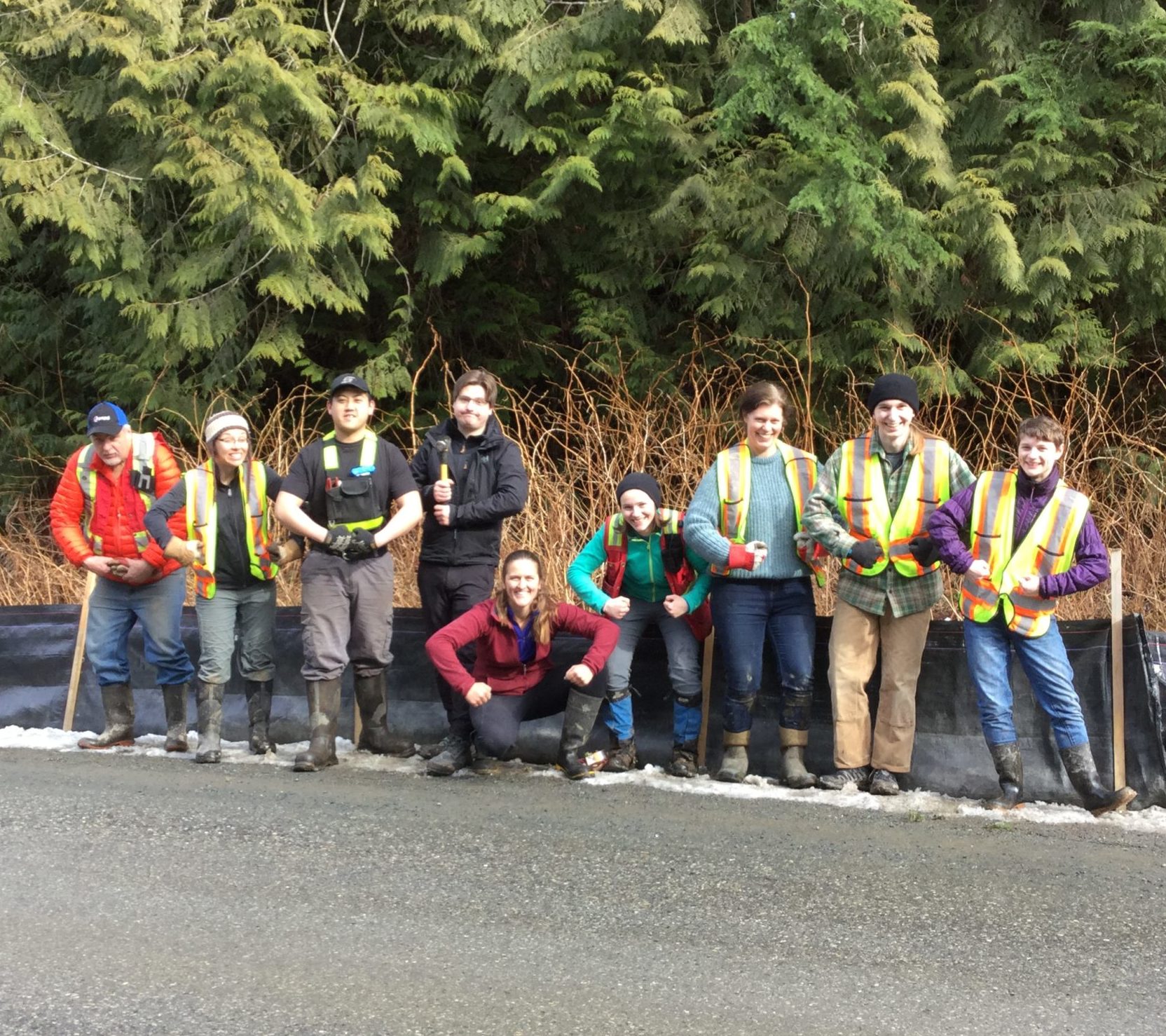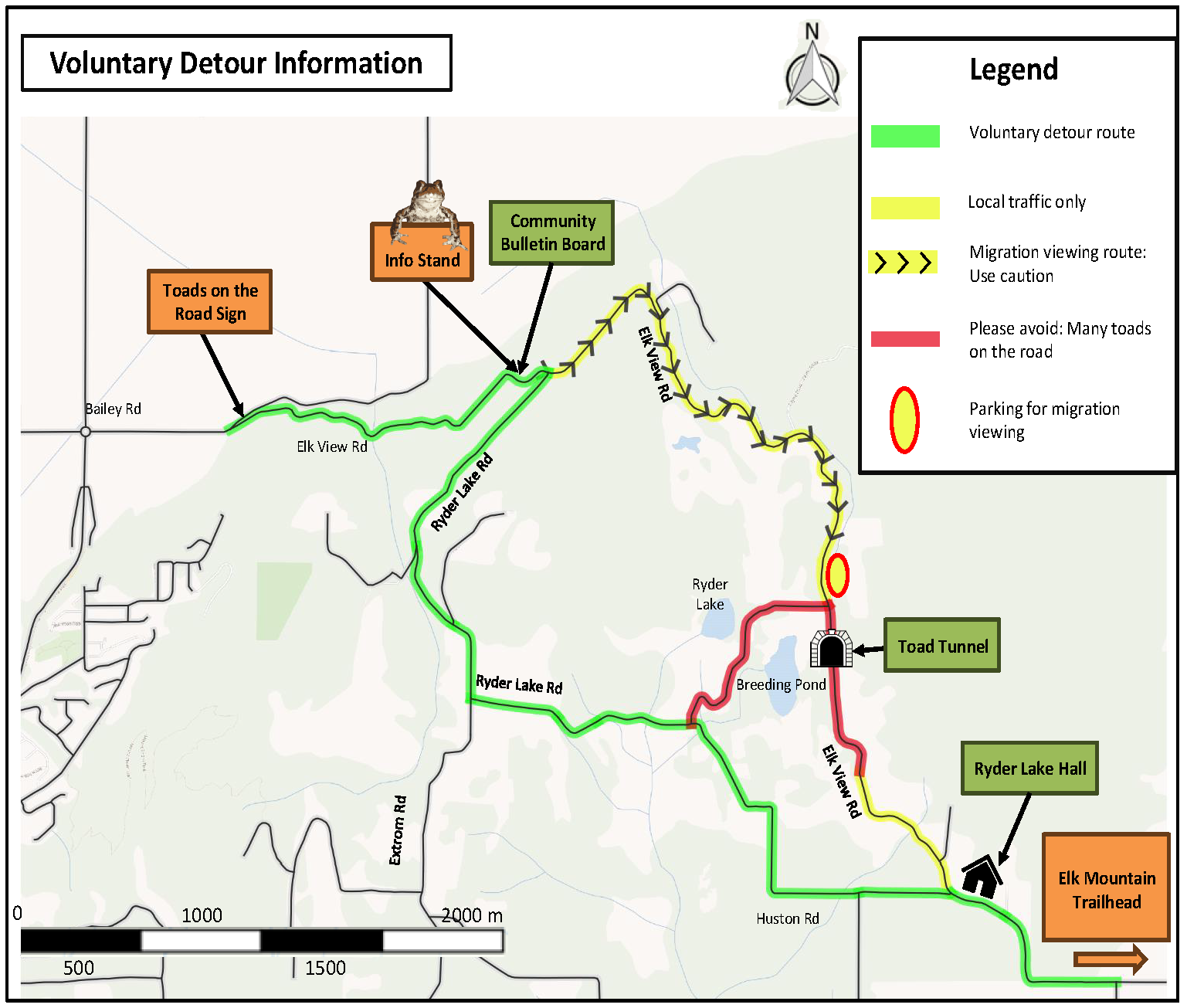Long Term Efforts
The history of the conservancy in Ryder Lake has been linked closely to the Western Toads and their migration. The first efforts relating to the migration were back in 2008 with a toad rescue event. Since then, we have tried many iterations of toad protection, some more effective than others. In 2015, the Fraser Valley Conservancy, along with local partners, installed a toad tunnel that runs beneath elk view road. This was a massive shift in the way that the toad migration was managed, and an overall win for the toadlets, who now had a way to get under the road safely. Combined with fencing and some strategically placed cameras, we now know that hundreds of thousands of toads have used the tunnel since its installation.

